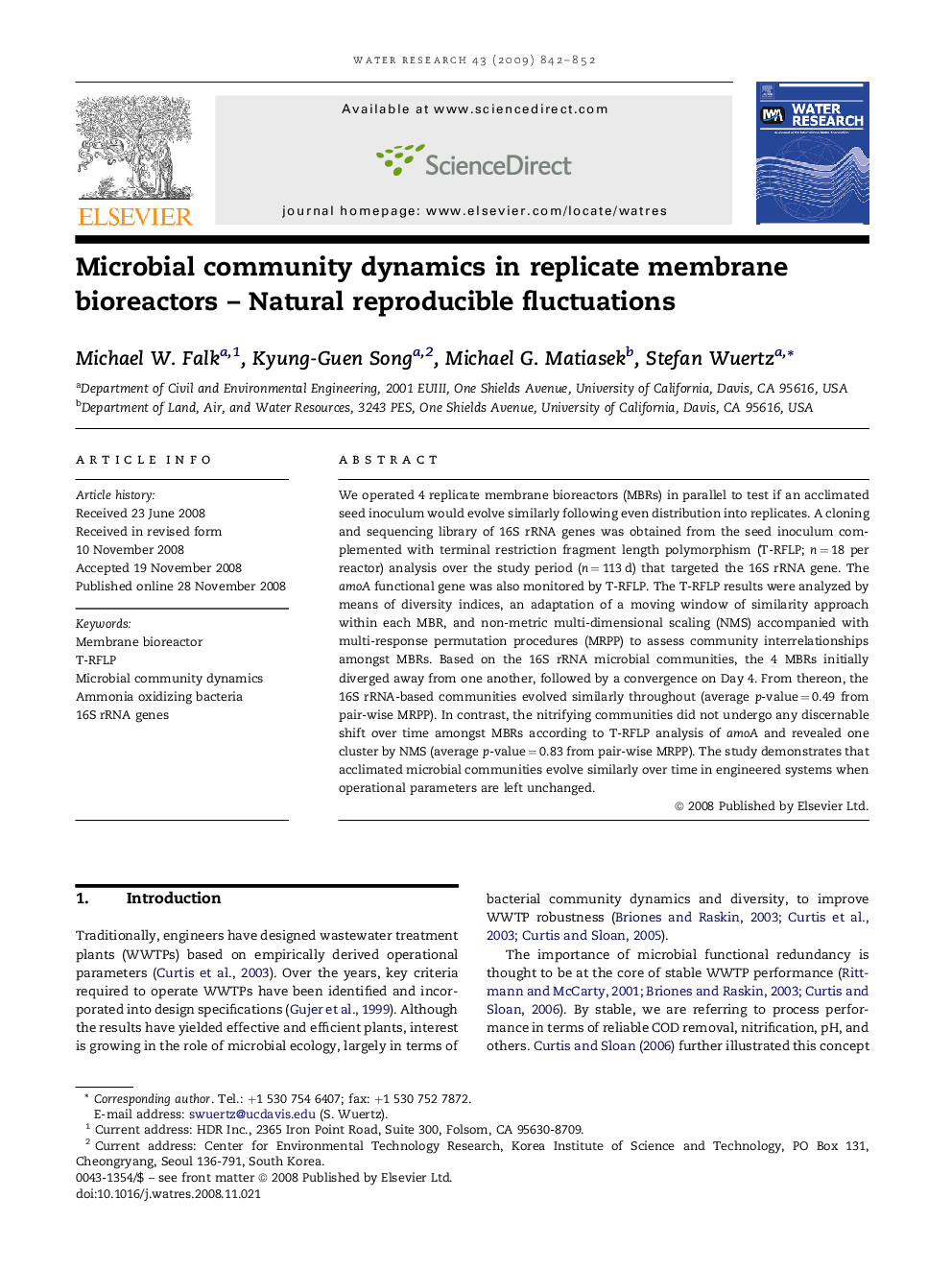| Article ID | Journal | Published Year | Pages | File Type |
|---|---|---|---|---|
| 4485301 | Water Research | 2009 | 11 Pages |
We operated 4 replicate membrane bioreactors (MBRs) in parallel to test if an acclimated seed inoculum would evolve similarly following even distribution into replicates. A cloning and sequencing library of 16S rRNA genes was obtained from the seed inoculum complemented with terminal restriction fragment length polymorphism (T-RFLP; n = 18 per reactor) analysis over the study period (n = 113 d) that targeted the 16S rRNA gene. The amoA functional gene was also monitored by T-RFLP. The T-RFLP results were analyzed by means of diversity indices, an adaptation of a moving window of similarity approach within each MBR, and non-metric multi-dimensional scaling (NMS) accompanied with multi-response permutation procedures (MRPP) to assess community interrelationships amongst MBRs. Based on the 16S rRNA microbial communities, the 4 MBRs initially diverged away from one another, followed by a convergence on Day 4. From thereon, the 16S rRNA-based communities evolved similarly throughout (average p-value = 0.49 from pair-wise MRPP). In contrast, the nitrifying communities did not undergo any discernable shift over time amongst MBRs according to T-RFLP analysis of amoA and revealed one cluster by NMS (average p-value = 0.83 from pair-wise MRPP). The study demonstrates that acclimated microbial communities evolve similarly over time in engineered systems when operational parameters are left unchanged.
